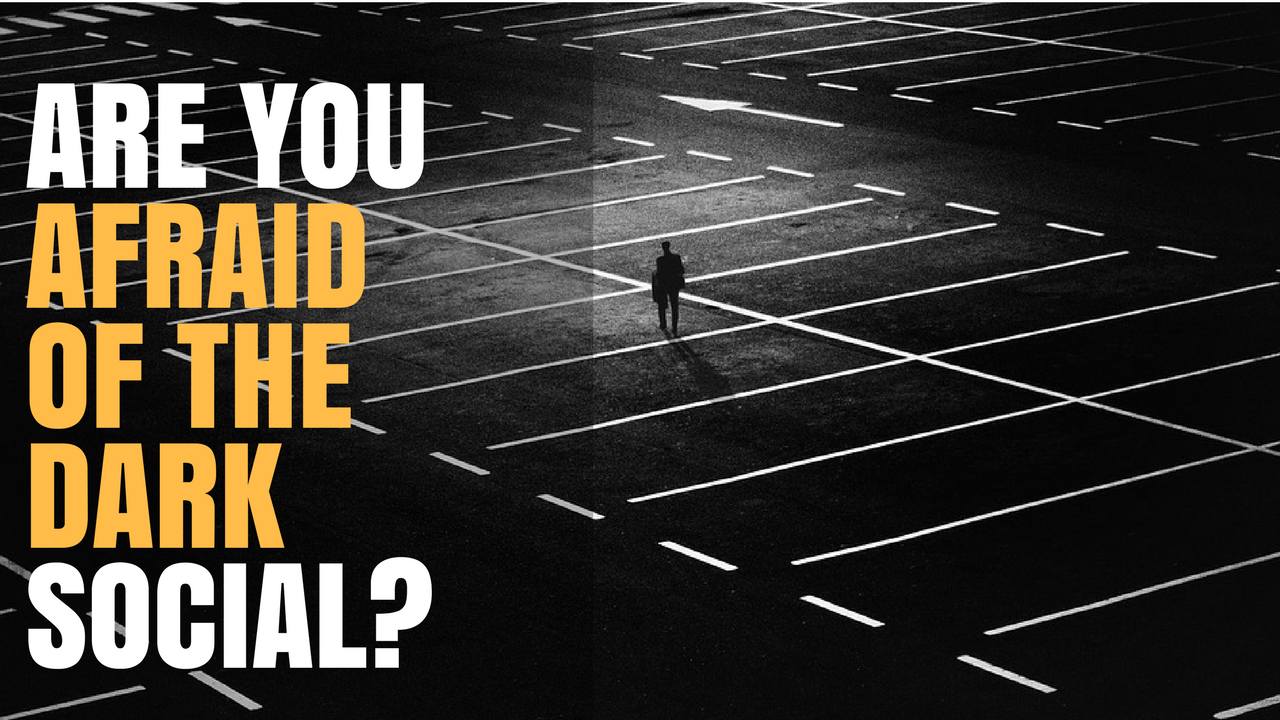The term 'Dark Social' has only actually been around for a few years, having been coined by then editor at The Atlantic, Alexis Madrigal in an article he wrote in 2012. In it he referred to the social sharing of content that takes place outside of the normal areas that web and social media analytics tools can measure. So essentially we're talking about content and traffic that manages to fly below the radar and not get picked up. Hence the term 'dark' because simply put, we just can't see it.
See, nothing that sinister yet, right? So why does there seem to be such a panic about it in the industry at the moment? Well it has been estimated that globally around 70% of all social media sharing is 'dark' and for the UK alone that estimate is closer to 75%. This basically means that we can't see, track or measure almost two thirds of the content sharing that happens on a daily basis. Obviously as human beings our curiosity gets the better of us and because we don't know what's being shared, we're naturally suspicious and allow our fear of the unknown to speculate about this 'dark' side. But the reason why we can't see these shares is surprisingly straightforward. Usually if somebody clicks a link to your website from Facebook, Twitter or any of the other social media platforms (much like you would have done to reach this article) then it's quite a simple process and analytics platforms can easily see where you came from to read the article. They do this through the use of referral tags, which are simple and automatically embedded in URL's to make them easy to track and attribute an origin site from. With me so far? The simple reason why many links don't have these tags, is often because the link has been copied from the social media site and pasted into an email, messaging app or text message. By not sharing the link through a web browser, the tag isn't added and effectively 'goes dark' so when the recipient of the email opens the link, any analytics tool attached to the host website won't be able to tell where on the web the user came from. Again, quite simply, because the user didn't get there from another website. As a result, this 'dark social' click through is recorded by the vast majority of website analytics tools as 'direct traffic'. Obviously, this isn't strictly accurate as it's actually an untrackable referral, but the vast majority of analytics tools can't tell the difference. So what does this mean for you and your business website? Well, it means that you can actually only accurately track around 30% of the traffic that visits the site. So any decision we might make about what's working or which platforms give us the best results in driving traffic can only be based on this very small percentage of what we can actually measure. It means we may be optimising our sites, content or products and services, based on the minority of our visitors and not the majority, simply because we have no other information available to us. So, as the name suggests, it actually keeps us in the dark about our audience, their likes/dislikes and online behaviour. What it also means is that it's highly likely that any real dark traffic is incredibly valuable to us. Think about it for a minute. If dark traffic is a link that is copied and pasted into a private message or email, then the chances are that someone has seen it, thought of someone they know who's likely to be interested in you and deliberately shared it with them directly. You could almost think of it as a very personal word of mouth referral between people who are likely to know each other very well. So for example, if my wife emails me a link to something she's interested in for her birthday, then it's highly likely that I'll click through and buy it. Imagine having that kind of power for your business. So how can you turn to the dark side and harness this power? Well, unfortunately, the simple answer is that at the moment you can't. Because it's not trackable, you just won't know how many wives are emailing their husbands links to your services or products, for example. There are some incredibly interesting conversations going on about the future of dark social at the moment though. Now that we know it represents such a big chunk of data that's missing from the picture, there are already companies like IBM working on potential solutions. Whatever you hear or read, the general consensus is that there's very little you can do about it right now. And if you can't do anything about it, it's probably not worth worrying about, yet.
1 Comment
|
Archives
October 2023
|


 RSS Feed
RSS Feed
